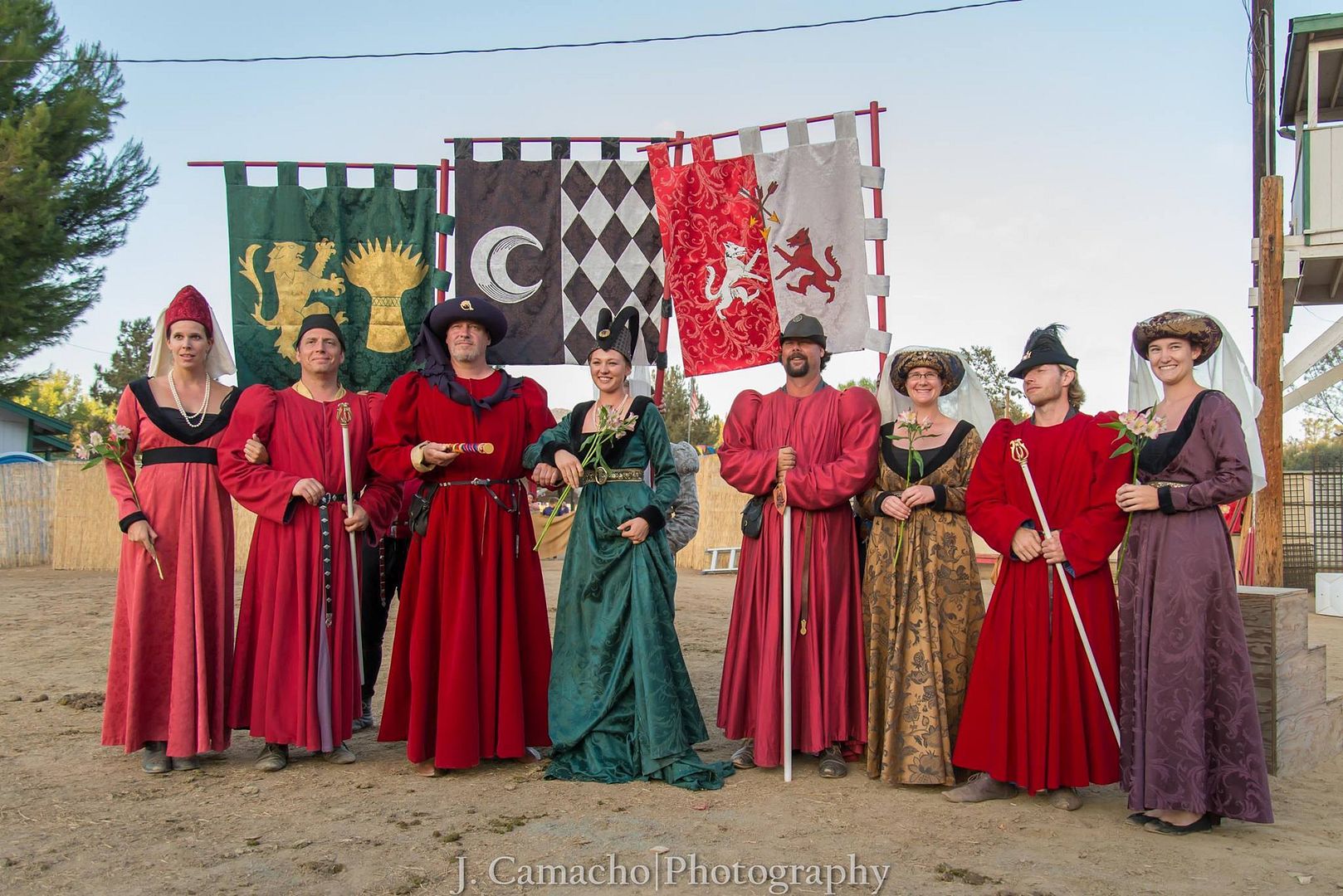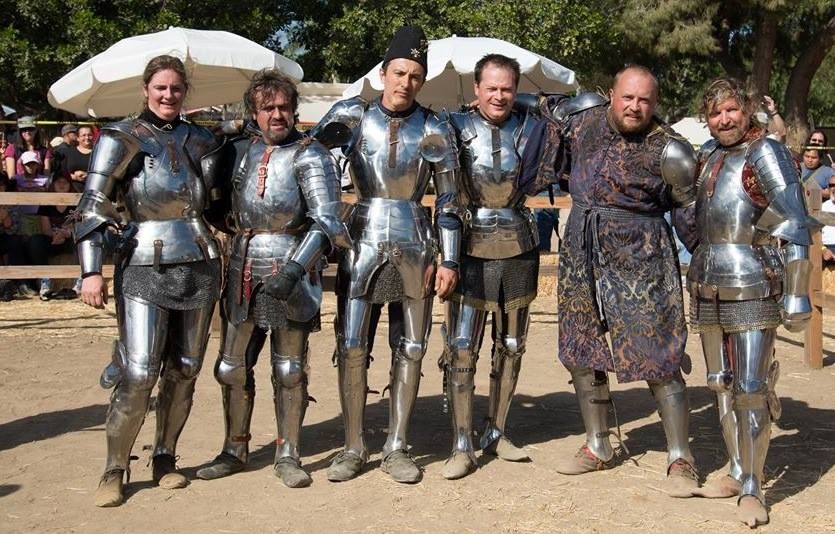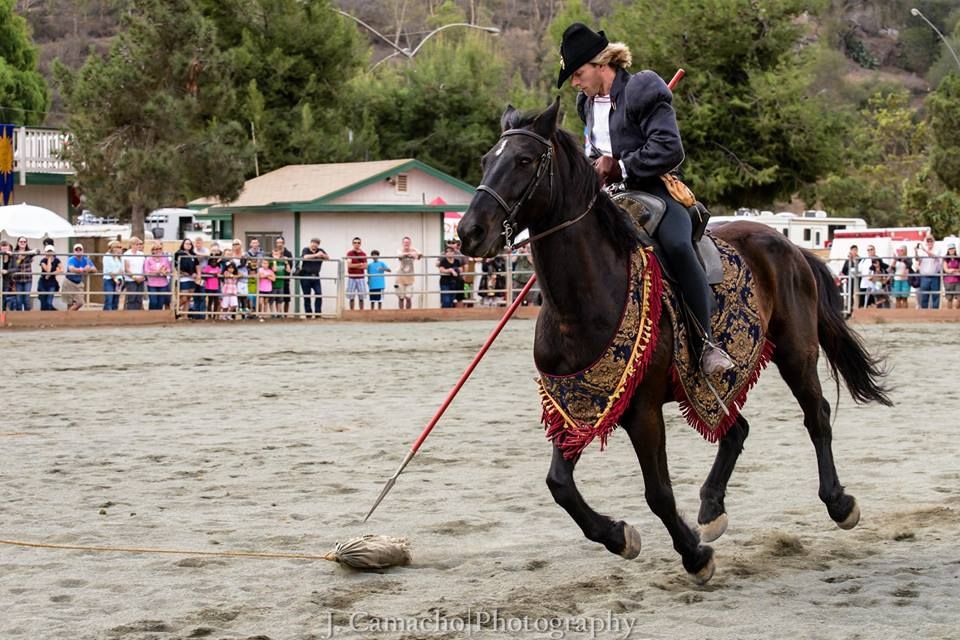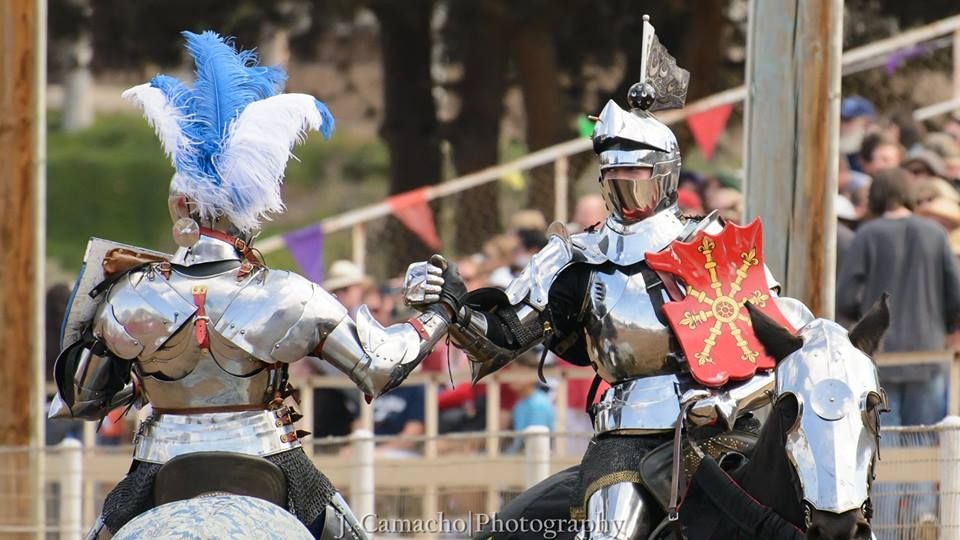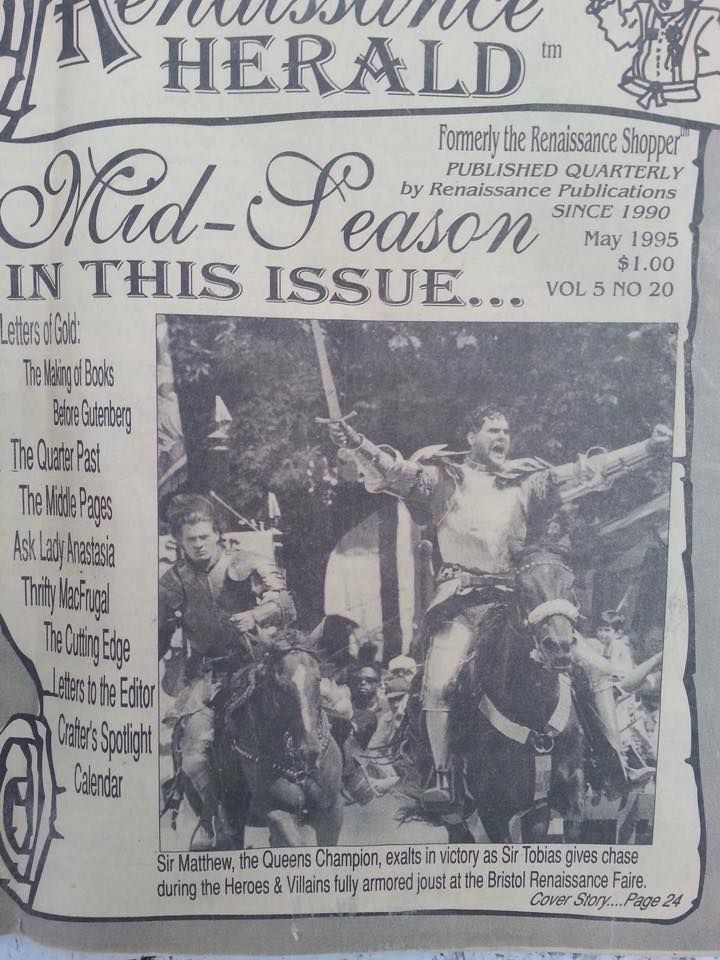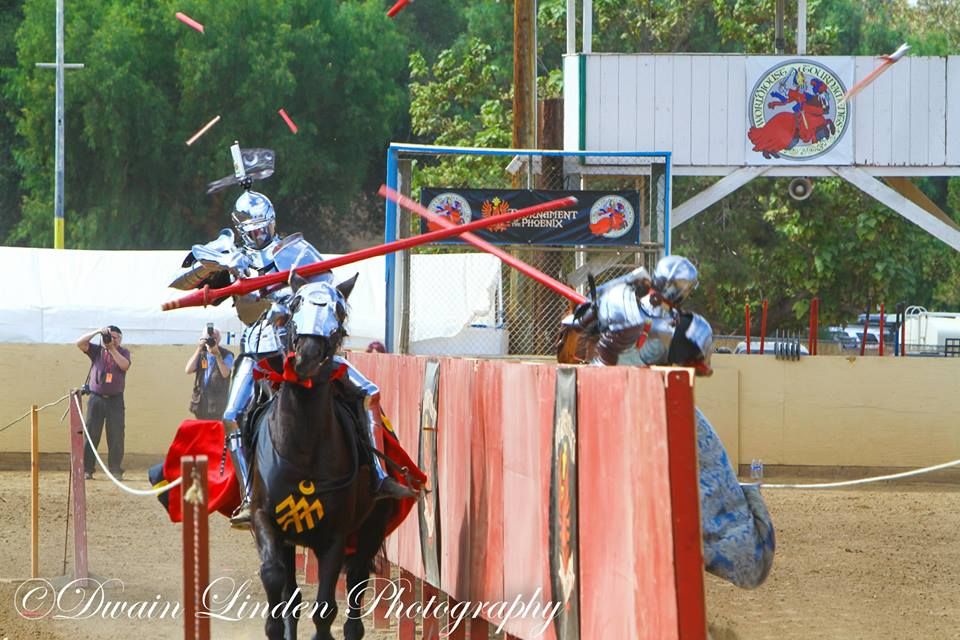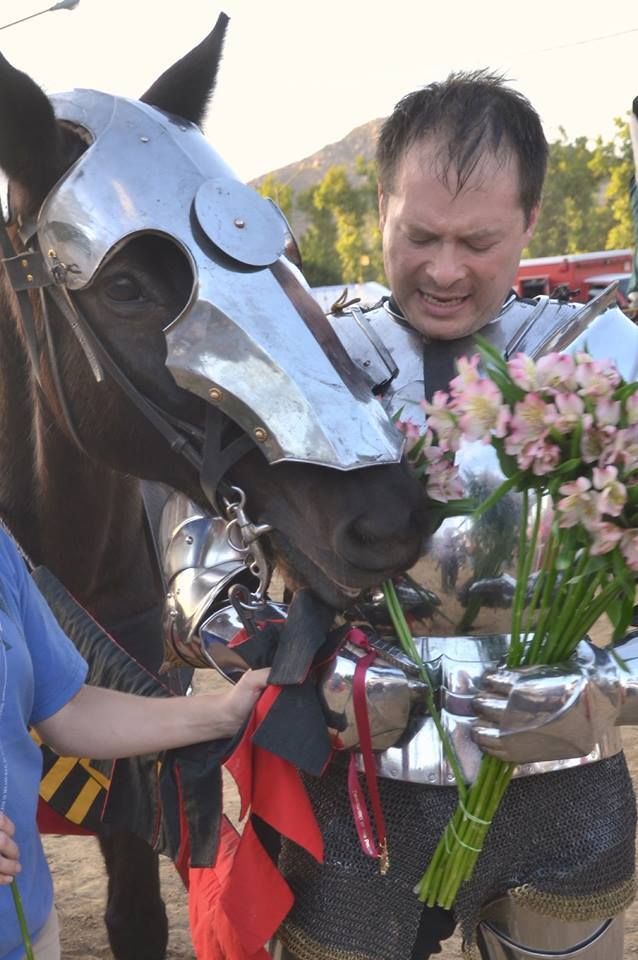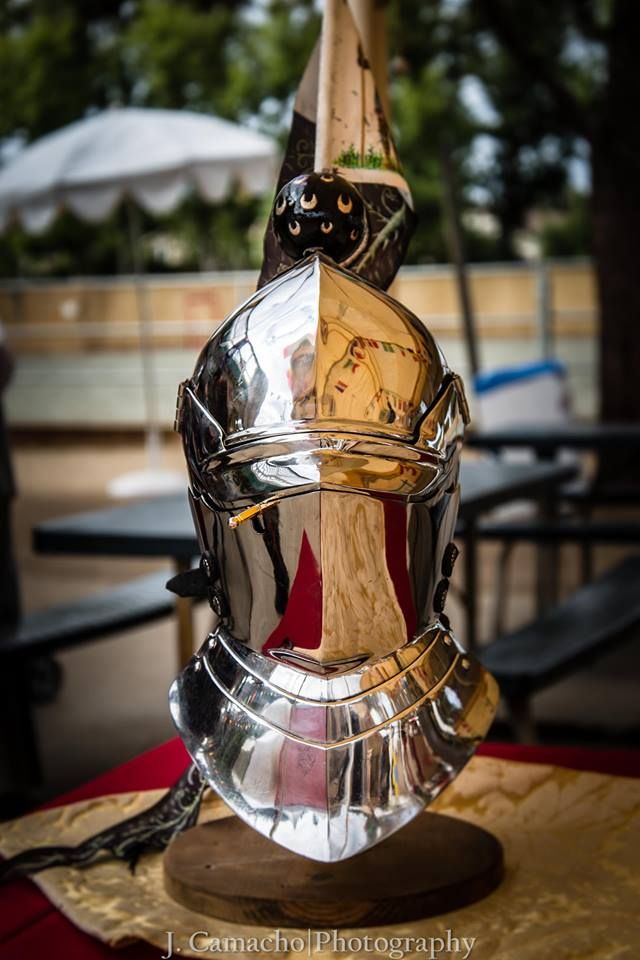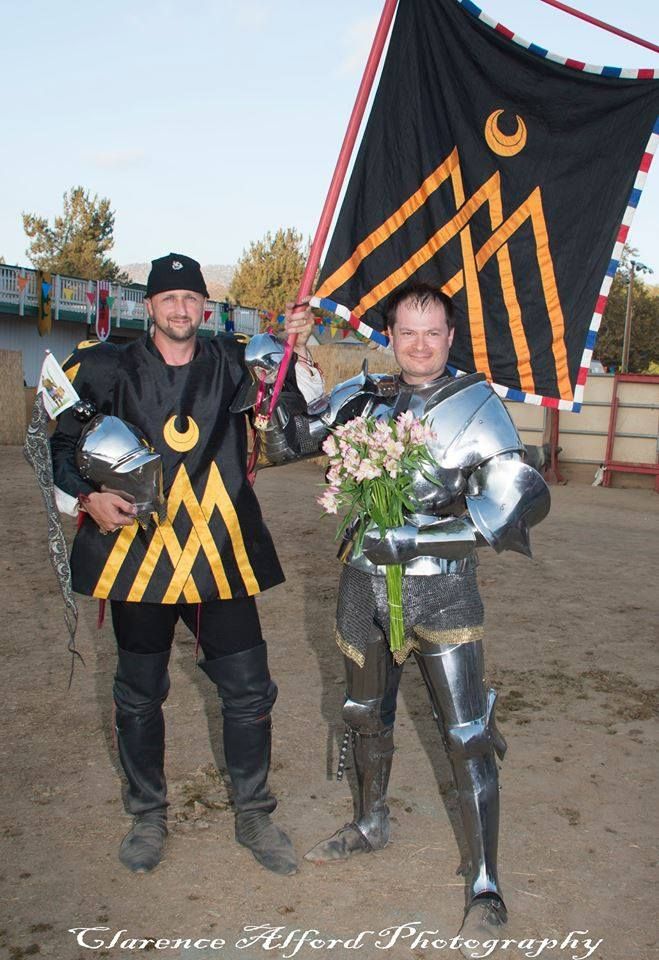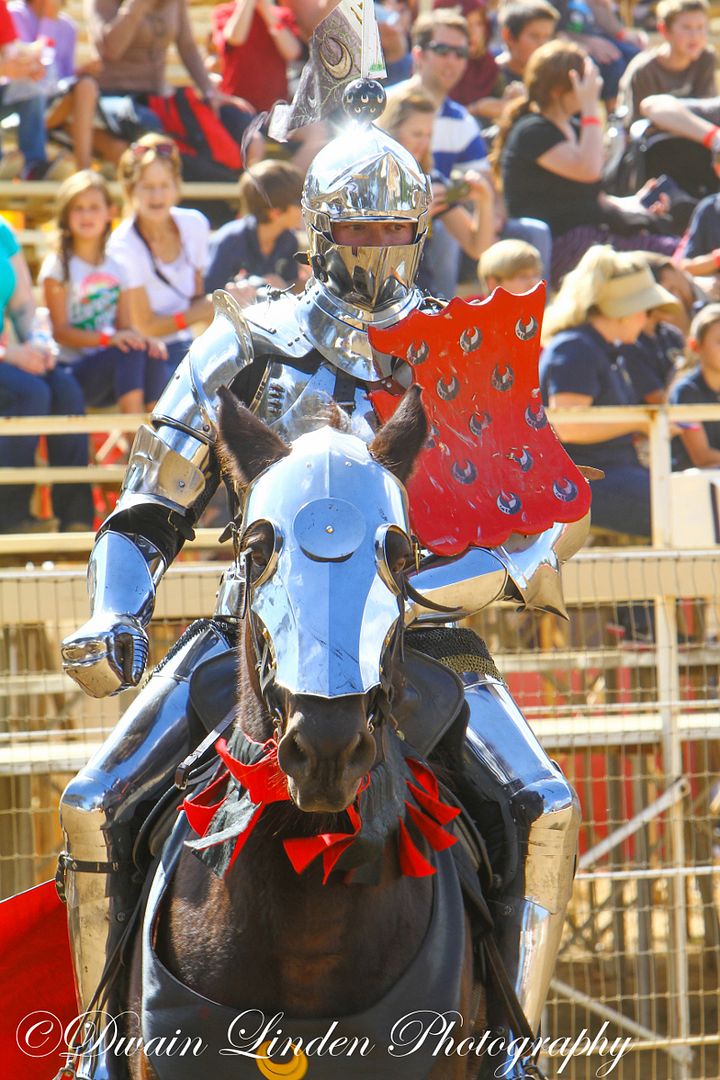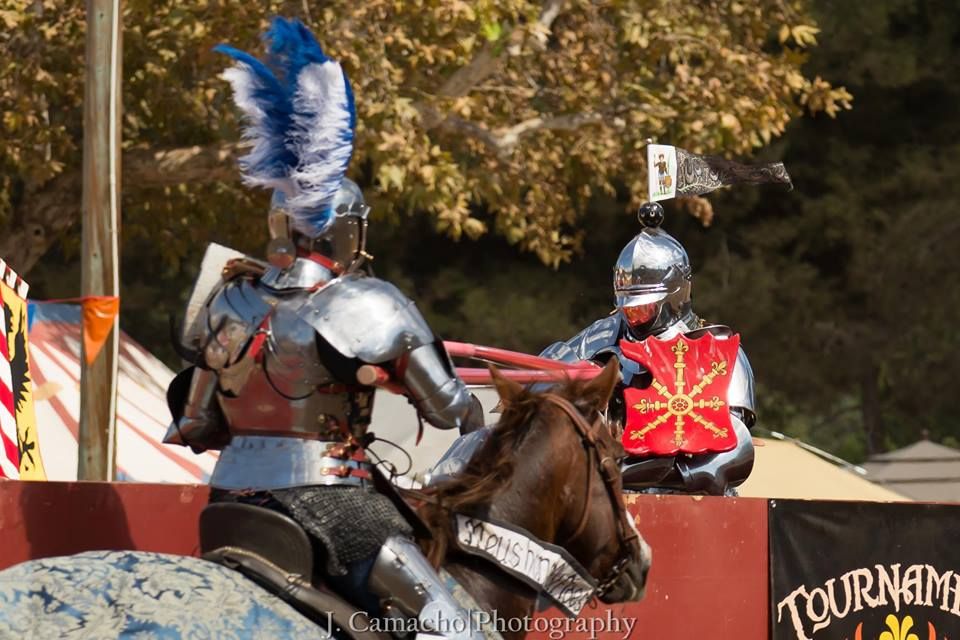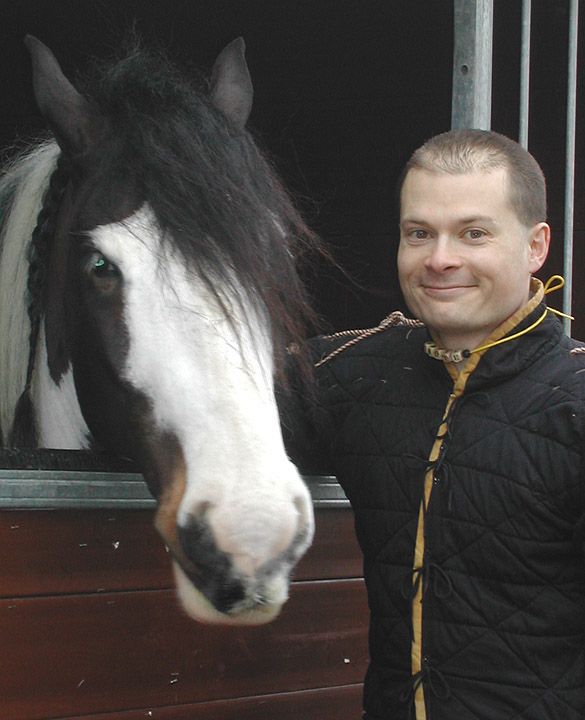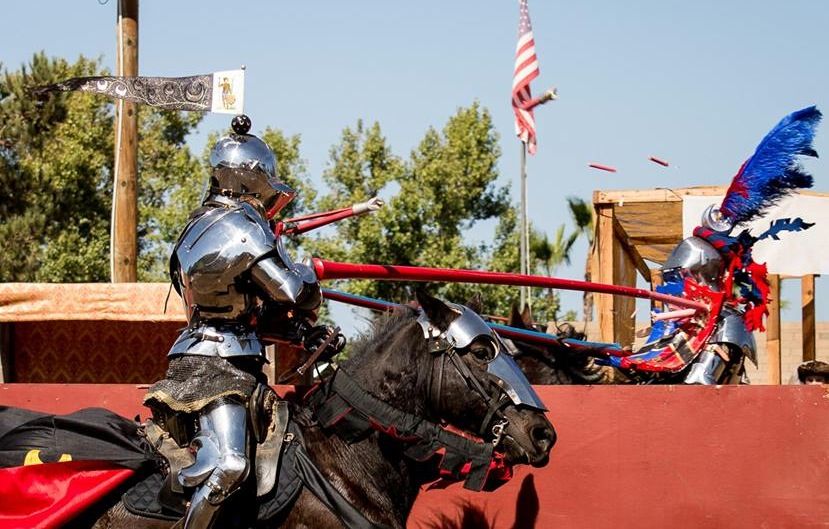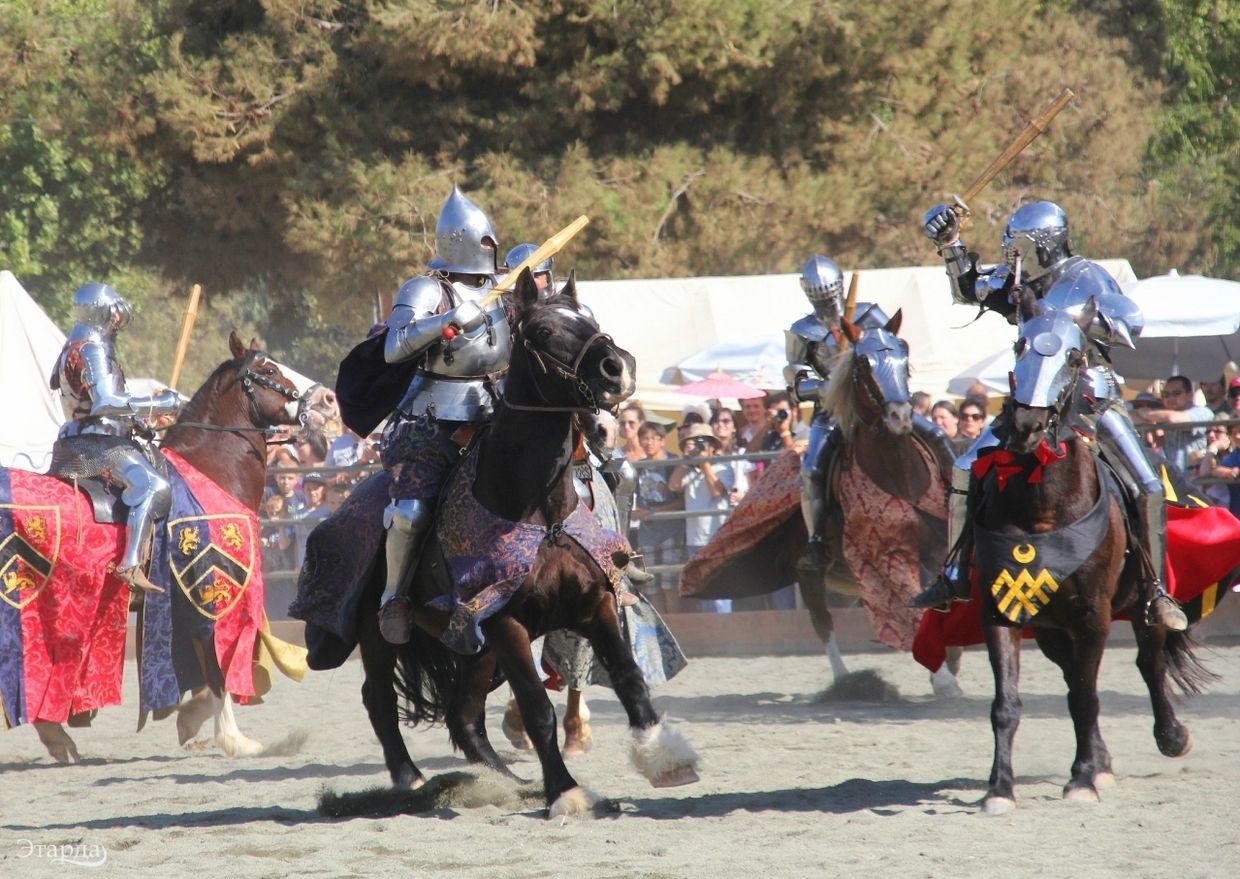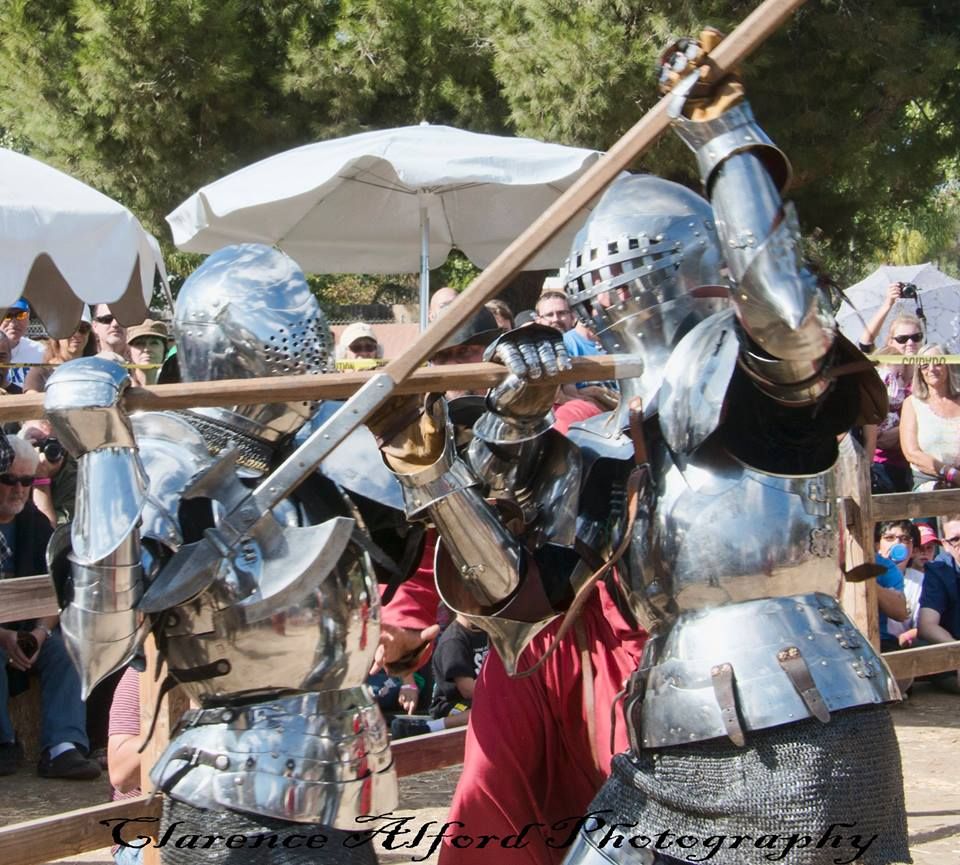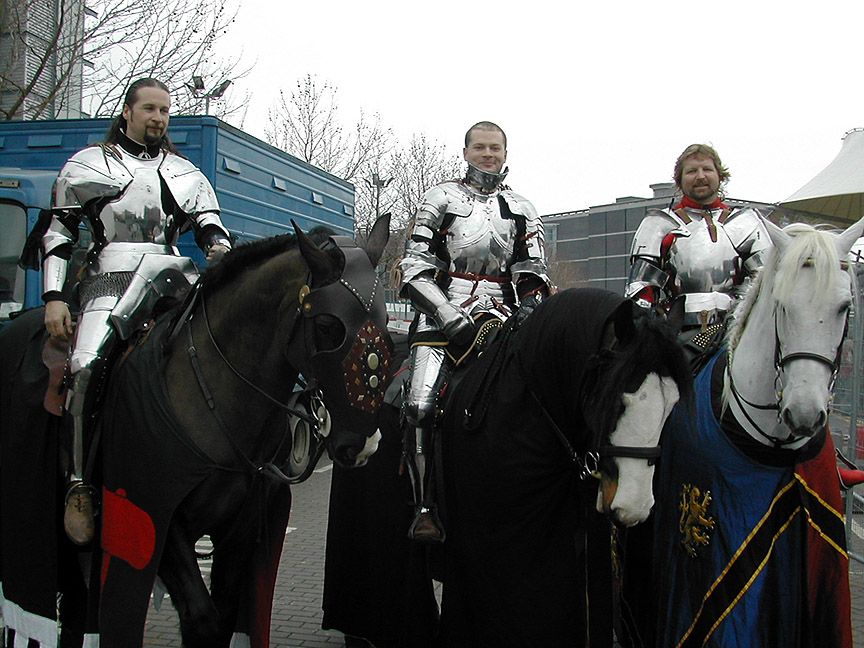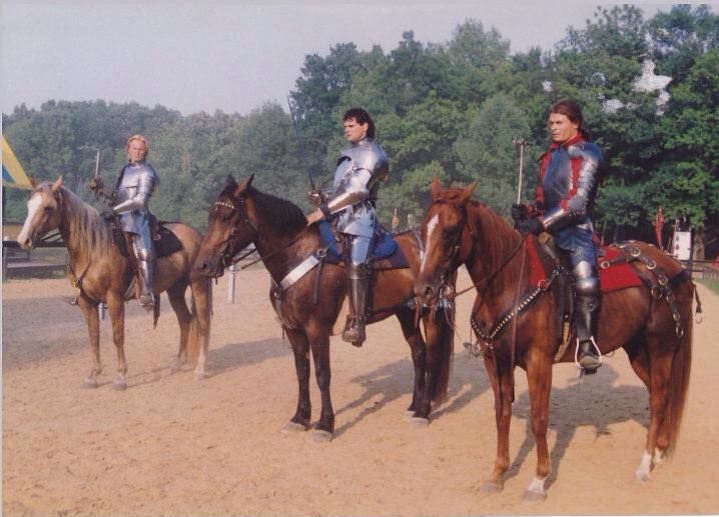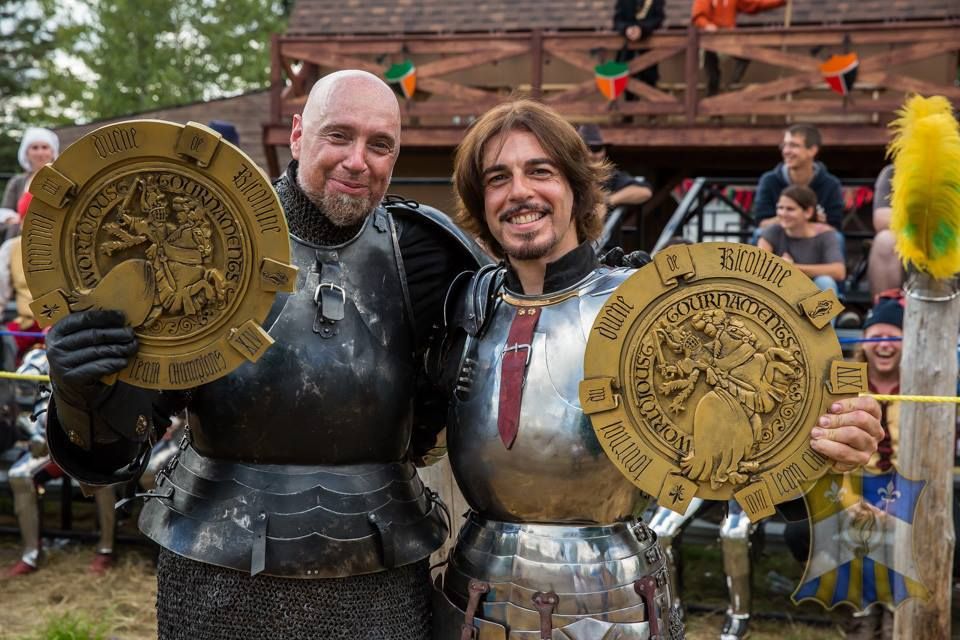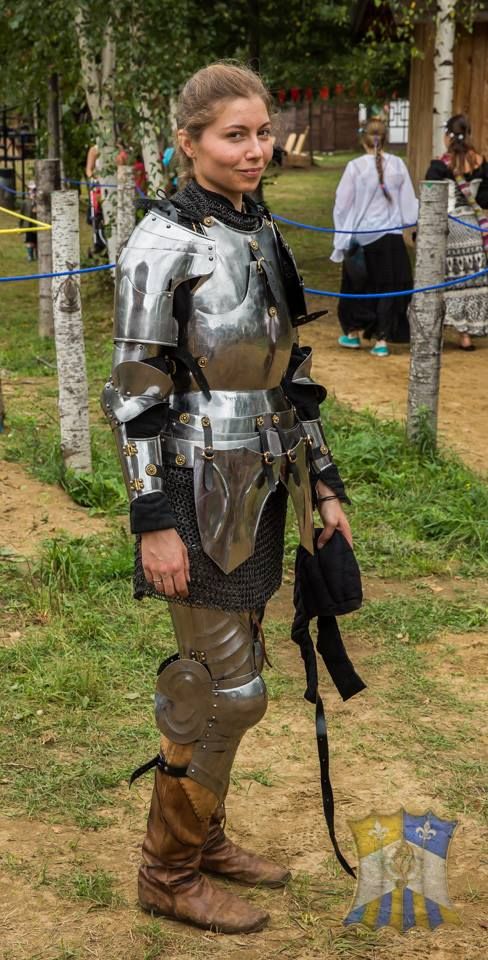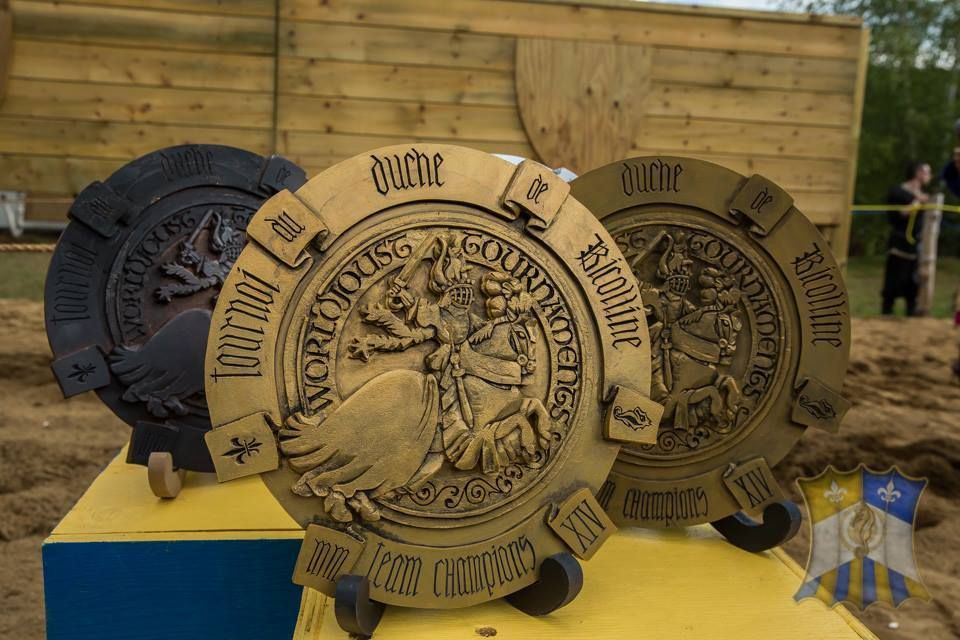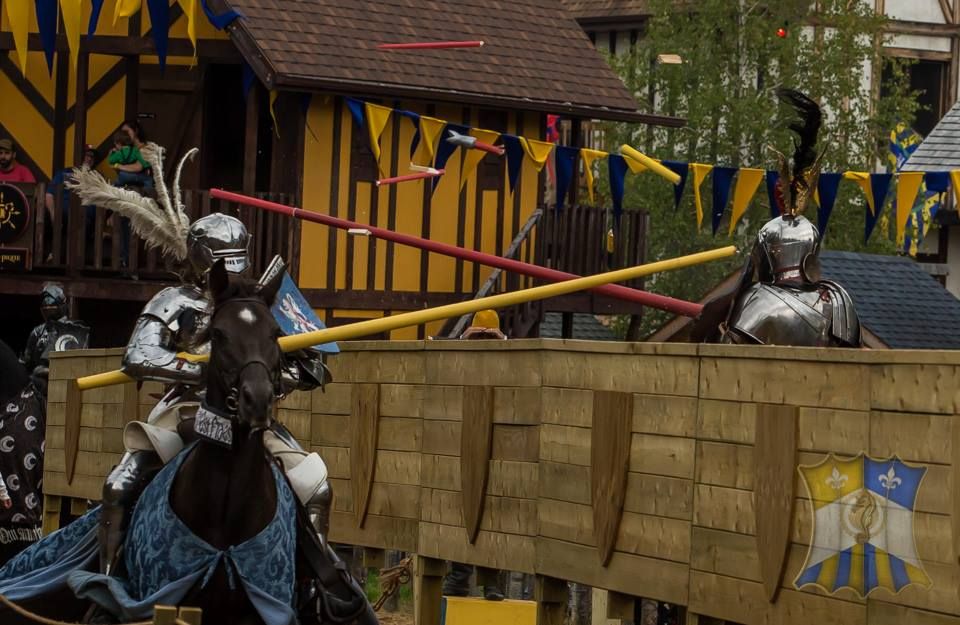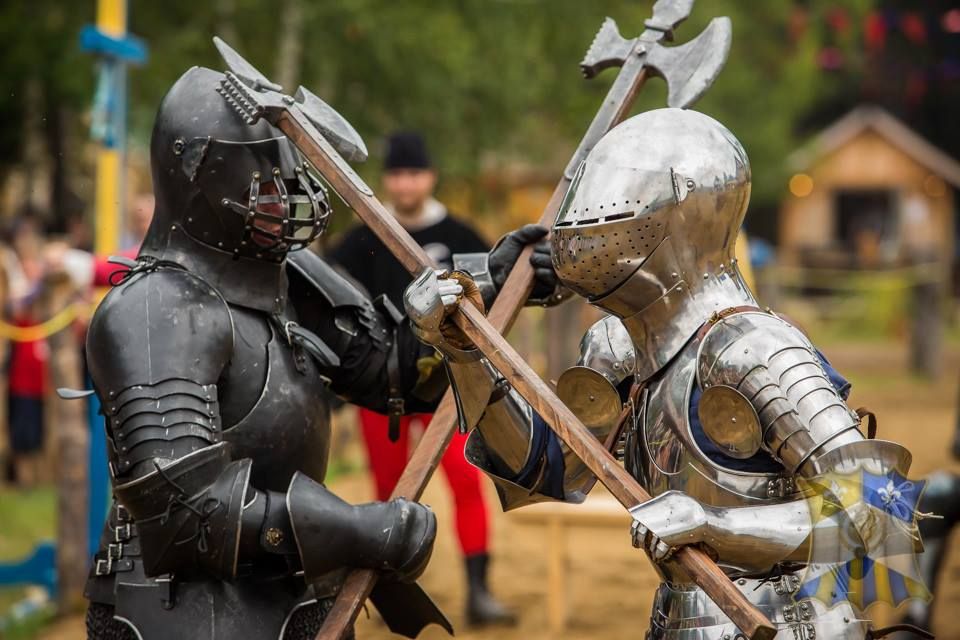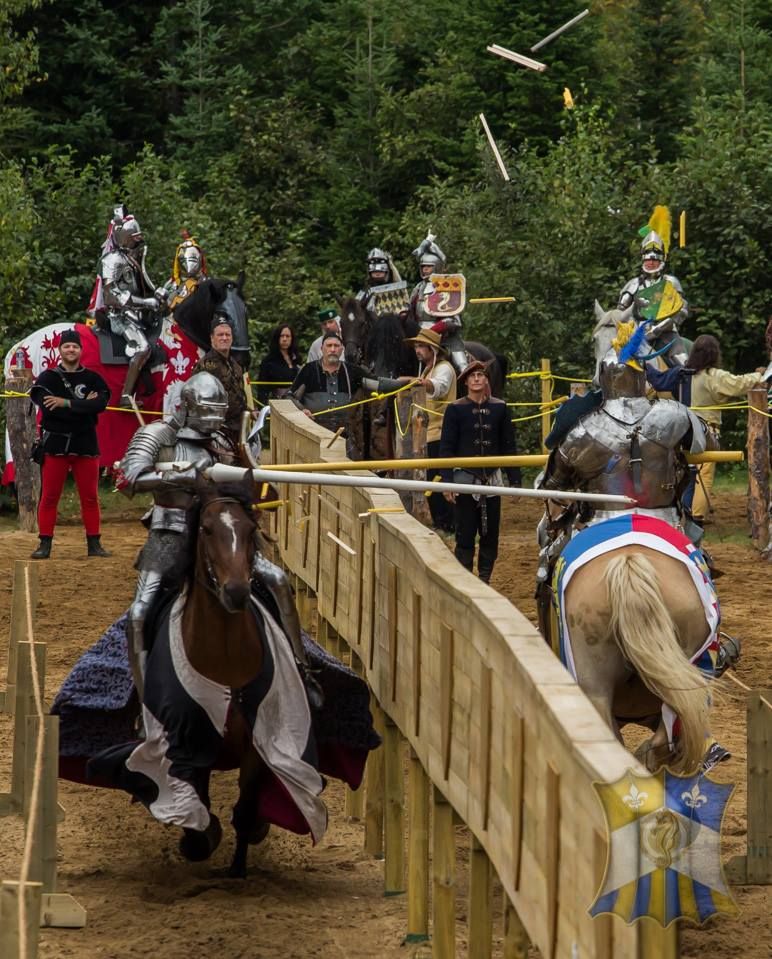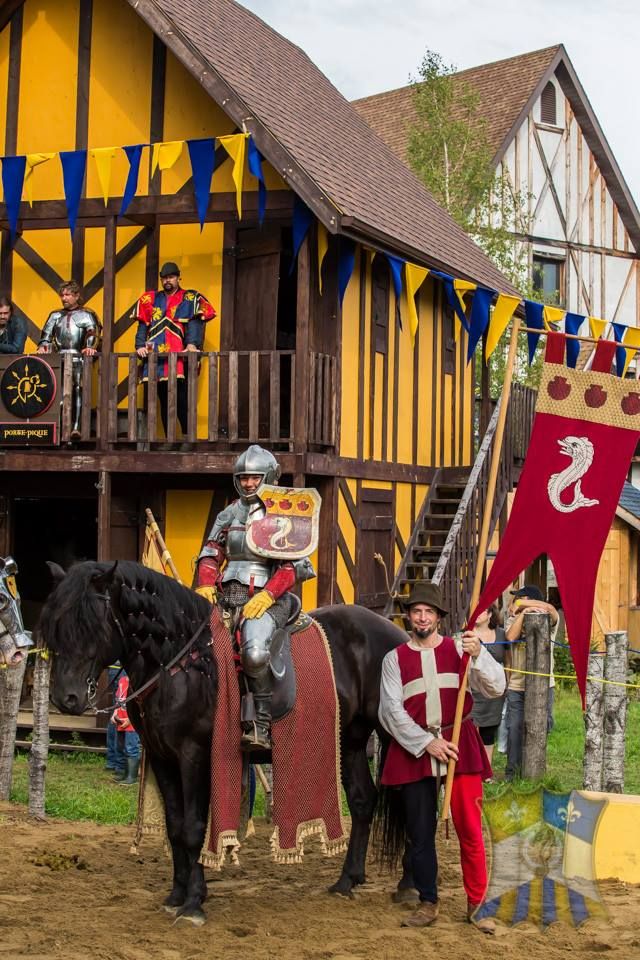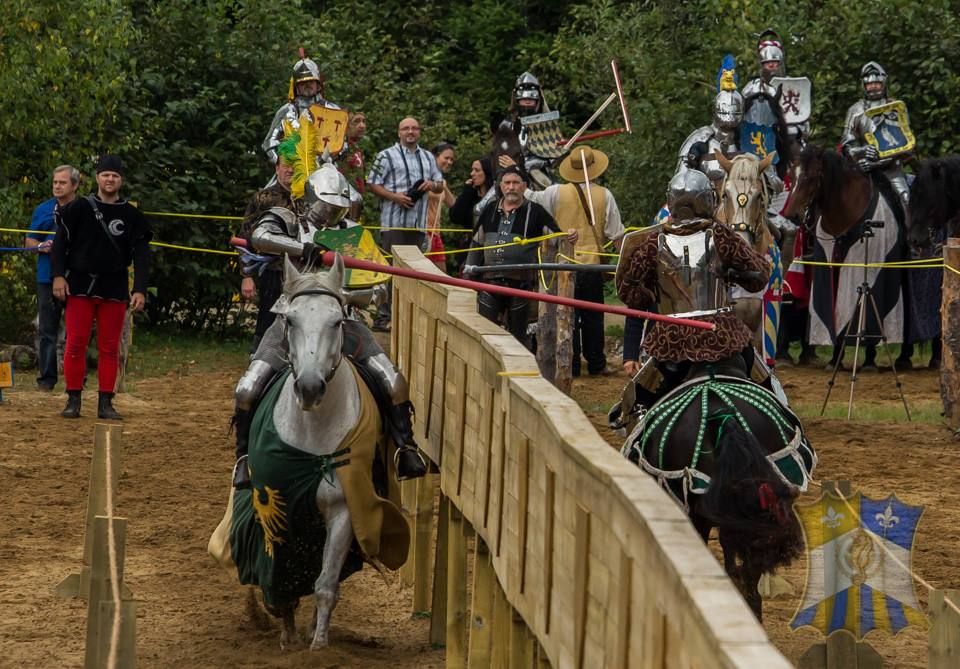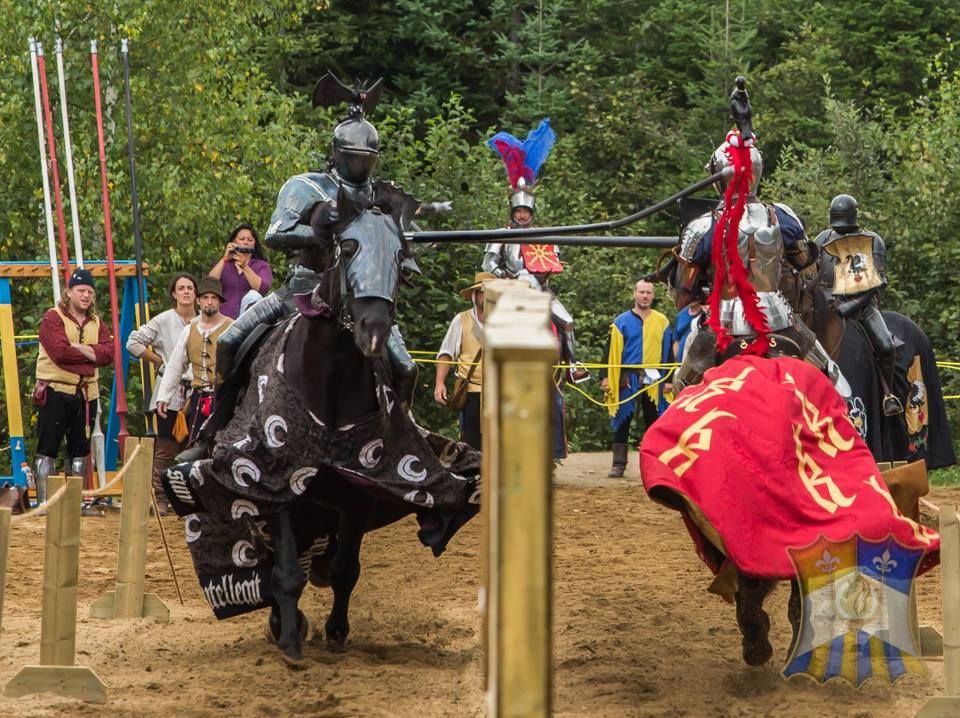The Jousting Life now has its own online shoppe!
Well, actually it's simply a personalized Amazon.com store, but it is filled with items that would make good gifts for jousters and fans of jousting, including books, videos and toys. A small percentage of the cost of items purchased through the The Jousting Life Shoppe (or through the main Amazon.com store if you link through from a TJL site) will be paid to TJL in commission. It does NOT cost you anything extra, you will still pay the same price you would normally.
The Jousting Life has grown big enough and popular enough that it exceeds the memory and bandwidth that hosting sites like Blogger and PhotoBucket allow you to use for free. I have been paying for hosting for almost a year now, and I have been trying to find a way to earn some money to help cover the expenses of keeping the website going. I am not asking you to buy anything that you would not normally buy. I am simply asking that if you buy items through Amazon.com that you purchase them through either the TJL Shoppe, the links provided here (and throughout the text) or the Amazon search widget on the sidebar, so that The Jousting Life can earn a small commission.
Below are listed some of the more interesting items that are for sale in the shoppe:
 Did you know that there is a fifteenth century manual on the art of warfare written by a woman? The Book of Deeds of Arms and of Chivalry by Christine De Pizan was written around 1410. Though many people believed that Christine was merely copying from earlier manuals, translator Sumner Willard and editor Charity Cannon Willard show that much of the text is original to Christine. The manual not only includes a great deal of information about the strategy, tactics and technology of medieval warfare, it is also one of the most important sources of information about early gunpowder weaponry.
Did you know that there is a fifteenth century manual on the art of warfare written by a woman? The Book of Deeds of Arms and of Chivalry by Christine De Pizan was written around 1410. Though many people believed that Christine was merely copying from earlier manuals, translator Sumner Willard and editor Charity Cannon Willard show that much of the text is original to Christine. The manual not only includes a great deal of information about the strategy, tactics and technology of medieval warfare, it is also one of the most important sources of information about early gunpowder weaponry.
 Other books in the non-fiction section of the store include: recent translations of classic texts such as The Book of the Order of Chivalry, written by Ramon Llul between 1274 and 1276 and newly translated by Dr. Noel Fallows for this 2013 publication. New editions of previously translated medieval texts such as Dom Duarte's Livro da Ensinança de Bem Cavalgar Toda Sela(The Art of Riding on Every Saddle). Books that include both original analysis of historic texts as well as facsimiles and translations of the those texts, such as Dr. Noel Fallow's seminal work Jousting in Medieval and Renaissance Iberia. And books with modern academic analysis of knights and chivalry, such as Knight: The Warrior and World of Chivalry by Dr. Robert Jones.
Other books in the non-fiction section of the store include: recent translations of classic texts such as The Book of the Order of Chivalry, written by Ramon Llul between 1274 and 1276 and newly translated by Dr. Noel Fallows for this 2013 publication. New editions of previously translated medieval texts such as Dom Duarte's Livro da Ensinança de Bem Cavalgar Toda Sela(The Art of Riding on Every Saddle). Books that include both original analysis of historic texts as well as facsimiles and translations of the those texts, such as Dr. Noel Fallow's seminal work Jousting in Medieval and Renaissance Iberia. And books with modern academic analysis of knights and chivalry, such as Knight: The Warrior and World of Chivalry by Dr. Robert Jones.
 The Letters, Memoirs & Essays sub-section of the non-fiction section includes historical texts, which, while not related to jousting, still provide insights into the everyday life of individuals who lived in medieval and renaissance Europe. A surprising number of them are written by women, including The Selected Writings of Christine de Pizan(who wrote more than military manuals), Selected Letters of Alessandra Strozzi, who lived in fifteenth century Florence; and The Memoirs of Helene Kottanner (1439-1440), who was the servant and confidante of Queen Elizabeth of Hungary. Kottaner's memoirs include detailed accounts of her participation in the theft of the holy crown of St Stephen from the treasury of the royal stronghold Visegrad. There is also a wonderfully illustrated version of The Travels of Marco Polo. Use Amazon's "Look inside" app to take a peek.
The Letters, Memoirs & Essays sub-section of the non-fiction section includes historical texts, which, while not related to jousting, still provide insights into the everyday life of individuals who lived in medieval and renaissance Europe. A surprising number of them are written by women, including The Selected Writings of Christine de Pizan(who wrote more than military manuals), Selected Letters of Alessandra Strozzi, who lived in fifteenth century Florence; and The Memoirs of Helene Kottanner (1439-1440), who was the servant and confidante of Queen Elizabeth of Hungary. Kottaner's memoirs include detailed accounts of her participation in the theft of the holy crown of St Stephen from the treasury of the royal stronghold Visegrad. There is also a wonderfully illustrated version of The Travels of Marco Polo. Use Amazon's "Look inside" app to take a peek.
 Then there is the section of Fun & Easy Books, which includes books that provide easy to read introductory information for younger readers or for those with a less intense interest in jousting, such as Knights at Tournament which is part of the Osprey series of military history books. Other Osprey books such as Tudor Knight were illustrated by former jouster Graham Turner. This section also includes coloring books, books of paper dolls with medieval and renaissance clothing, and, of course, sticker books. The Ultimate Sticker Book: Castle and Knight includes over 60 full color stickers, some of which glow in the dark.
Then there is the section of Fun & Easy Books, which includes books that provide easy to read introductory information for younger readers or for those with a less intense interest in jousting, such as Knights at Tournament which is part of the Osprey series of military history books. Other Osprey books such as Tudor Knight were illustrated by former jouster Graham Turner. This section also includes coloring books, books of paper dolls with medieval and renaissance clothing, and, of course, sticker books. The Ultimate Sticker Book: Castle and Knight includes over 60 full color stickers, some of which glow in the dark.
 The fiction section includes mostly historic fiction that jousters and other nobles might have read or listened to during their own lifetimes, with a few contemporary novels that involve jousting and/or knights thrown in. Hard Day's Knight is about a fictional contemporary jousting competition, while The Greatest Knight is historical fiction based on the life of William Marshal. This section also includes books of plays, poems and song lyrics from the medieval and renaissance time period. Medieval English Lyrics and Carols includes not only poems with romantic, moral and penitential themes; but also poems of wit, humor and sexual innuendo; drinking and dancing songs; ballads and satires. There is also an extensive introduction and comprehensive commentary.
The fiction section includes mostly historic fiction that jousters and other nobles might have read or listened to during their own lifetimes, with a few contemporary novels that involve jousting and/or knights thrown in. Hard Day's Knight is about a fictional contemporary jousting competition, while The Greatest Knight is historical fiction based on the life of William Marshal. This section also includes books of plays, poems and song lyrics from the medieval and renaissance time period. Medieval English Lyrics and Carols includes not only poems with romantic, moral and penitential themes; but also poems of wit, humor and sexual innuendo; drinking and dancing songs; ballads and satires. There is also an extensive introduction and comprehensive commentary.
 The movies, tv & videos section includes the modern movies and tv shows that you would expect from A Knight's Tale to Knights of Mayhem, as well as classic movies such as Ivanhoe and The Three Musketeers. It also includes educational and instructional videos such as Going Medieval which features the original jousting curator Toby Capwell, and Medieval Fight Book which was inspired by Hans Talhoffer's fifteenth century manual.
The movies, tv & videos section includes the modern movies and tv shows that you would expect from A Knight's Tale to Knights of Mayhem, as well as classic movies such as Ivanhoe and The Three Musketeers. It also includes educational and instructional videos such as Going Medieval which features the original jousting curator Toby Capwell, and Medieval Fight Book which was inspired by Hans Talhoffer's fifteenth century manual.
 The toys, puzzles and games section includes jousting and medieval themed items for every age from toddlers to adults. There are puzzles that vary from the 200 piece "World of the Knights" to the 890 piece 3-D version of Neuschwanstein Castle. There are a couple of rubber stamps(including one of Bodiam Castle), and a variety of toy castles, some of which fold, others are made out of building blocks and some are big enough to play in. And of course, there are lots of toy knights. There are even a couple of video games. I was unable to include the Rival Knights game in the TJL store, probably because it is available for FREE!
The toys, puzzles and games section includes jousting and medieval themed items for every age from toddlers to adults. There are puzzles that vary from the 200 piece "World of the Knights" to the 890 piece 3-D version of Neuschwanstein Castle. There are a couple of rubber stamps(including one of Bodiam Castle), and a variety of toy castles, some of which fold, others are made out of building blocks and some are big enough to play in. And of course, there are lots of toy knights. There are even a couple of video games. I was unable to include the Rival Knights game in the TJL store, probably because it is available for FREE!
 Within the toy section, there are sub-sections for 'toy swords and shields'(there are separate sections for combat training swords and LARP swords), 'Playmobil knight toys'(for younger children) and the more detailed 'Schleich knight figurines'(which are suitable for both older children and adults). Playmobil makes the 40th Anniversary Knight's Tournament set(which includes a quintain and fully loaded weapons rack), and Schleich makes the Tournament Knights Scenery pack(which includes two knights on horses and a wooden tilt).
Within the toy section, there are sub-sections for 'toy swords and shields'(there are separate sections for combat training swords and LARP swords), 'Playmobil knight toys'(for younger children) and the more detailed 'Schleich knight figurines'(which are suitable for both older children and adults). Playmobil makes the 40th Anniversary Knight's Tournament set(which includes a quintain and fully loaded weapons rack), and Schleich makes the Tournament Knights Scenery pack(which includes two knights on horses and a wooden tilt).
 The party and cooking supplies section includes cookware and serveware for a joust/medieval themed party. There are cake pans in the shape of castles, cookie cutters to create horses and riders that can stand on their own, and candy molds to create chocolate horses. There is a cupcake making set with medieval themed paper cups and knight toppers. There are paper plates with scenes of knights jousting. There are medieval themed napkins, cups and gift bags. And both inexpensive plastic and fancy brass goblets are available. There is even a very elaborate cardboard castle centerpiece complete with knights and men at arms.
The party and cooking supplies section includes cookware and serveware for a joust/medieval themed party. There are cake pans in the shape of castles, cookie cutters to create horses and riders that can stand on their own, and candy molds to create chocolate horses. There is a cupcake making set with medieval themed paper cups and knight toppers. There are paper plates with scenes of knights jousting. There are medieval themed napkins, cups and gift bags. And both inexpensive plastic and fancy brass goblets are available. There is even a very elaborate cardboard castle centerpiece complete with knights and men at arms.
 And then, of course, there is the gifts section. Though many of the items in other sections would make excellent gifts, these items are particularly gift-worthy. One of the cutest items is a pair of solid pewter jousting knight cufflinks. There are also several knight charms for bracelets or necklaces. Something a bit more practical for jousters and history lovers who read lots of books are the several sets of medieval themed bookends. Other gift ideas include both small inexpensive pewter figurines of knights and larger cast bronze figures. There are several posters along with the requisite t-shirts, mugs and hanging ornaments.
And then, of course, there is the gifts section. Though many of the items in other sections would make excellent gifts, these items are particularly gift-worthy. One of the cutest items is a pair of solid pewter jousting knight cufflinks. There are also several knight charms for bracelets or necklaces. Something a bit more practical for jousters and history lovers who read lots of books are the several sets of medieval themed bookends. Other gift ideas include both small inexpensive pewter figurines of knights and larger cast bronze figures. There are several posters along with the requisite t-shirts, mugs and hanging ornaments.
 Finally, there are the items which simply don't fit into any other sections – the miscellaneous items. Some of these items are weirdly adorable, like the Arthur boiled egg cup holder in the shape of a knight holding a functional spoon. There are also pet costumes that make it look like a knight is riding your dog. There is a lunchbox and other school supplies that feature the image of a jousting knight. There are license plate frames that state,"I'd rather be jousting" in black, silver and PINK! There are a variety of wall-mounted sword holders. And a few other jousting/knight related items.
Finally, there are the items which simply don't fit into any other sections – the miscellaneous items. Some of these items are weirdly adorable, like the Arthur boiled egg cup holder in the shape of a knight holding a functional spoon. There are also pet costumes that make it look like a knight is riding your dog. There is a lunchbox and other school supplies that feature the image of a jousting knight. There are license plate frames that state,"I'd rather be jousting" in black, silver and PINK! There are a variety of wall-mounted sword holders. And a few other jousting/knight related items.
More items and categories of items will be added when they are found, suggested or become available. If you have any suggestions, feel free to email TJL.
Whether you are buying for yourself or for someone else, I would very much appreciate it if you would purchase your Amazon.com items through either The Jousting Life Shoppe or after linking through to Amazon.com from a TJL site.
Thank you for your support!
Well, actually it's simply a personalized Amazon.com store, but it is filled with items that would make good gifts for jousters and fans of jousting, including books, videos and toys. A small percentage of the cost of items purchased through the The Jousting Life Shoppe (or through the main Amazon.com store if you link through from a TJL site) will be paid to TJL in commission. It does NOT cost you anything extra, you will still pay the same price you would normally.
The Jousting Life has grown big enough and popular enough that it exceeds the memory and bandwidth that hosting sites like Blogger and PhotoBucket allow you to use for free. I have been paying for hosting for almost a year now, and I have been trying to find a way to earn some money to help cover the expenses of keeping the website going. I am not asking you to buy anything that you would not normally buy. I am simply asking that if you buy items through Amazon.com that you purchase them through either the TJL Shoppe, the links provided here (and throughout the text) or the Amazon search widget on the sidebar, so that The Jousting Life can earn a small commission.
Below are listed some of the more interesting items that are for sale in the shoppe:
 Did you know that there is a fifteenth century manual on the art of warfare written by a woman? The Book of Deeds of Arms and of Chivalry by Christine De Pizan was written around 1410. Though many people believed that Christine was merely copying from earlier manuals, translator Sumner Willard and editor Charity Cannon Willard show that much of the text is original to Christine. The manual not only includes a great deal of information about the strategy, tactics and technology of medieval warfare, it is also one of the most important sources of information about early gunpowder weaponry.
Did you know that there is a fifteenth century manual on the art of warfare written by a woman? The Book of Deeds of Arms and of Chivalry by Christine De Pizan was written around 1410. Though many people believed that Christine was merely copying from earlier manuals, translator Sumner Willard and editor Charity Cannon Willard show that much of the text is original to Christine. The manual not only includes a great deal of information about the strategy, tactics and technology of medieval warfare, it is also one of the most important sources of information about early gunpowder weaponry.  Other books in the non-fiction section of the store include: recent translations of classic texts such as The Book of the Order of Chivalry, written by Ramon Llul between 1274 and 1276 and newly translated by Dr. Noel Fallows for this 2013 publication. New editions of previously translated medieval texts such as Dom Duarte's Livro da Ensinança de Bem Cavalgar Toda Sela(The Art of Riding on Every Saddle). Books that include both original analysis of historic texts as well as facsimiles and translations of the those texts, such as Dr. Noel Fallow's seminal work Jousting in Medieval and Renaissance Iberia. And books with modern academic analysis of knights and chivalry, such as Knight: The Warrior and World of Chivalry by Dr. Robert Jones.
Other books in the non-fiction section of the store include: recent translations of classic texts such as The Book of the Order of Chivalry, written by Ramon Llul between 1274 and 1276 and newly translated by Dr. Noel Fallows for this 2013 publication. New editions of previously translated medieval texts such as Dom Duarte's Livro da Ensinança de Bem Cavalgar Toda Sela(The Art of Riding on Every Saddle). Books that include both original analysis of historic texts as well as facsimiles and translations of the those texts, such as Dr. Noel Fallow's seminal work Jousting in Medieval and Renaissance Iberia. And books with modern academic analysis of knights and chivalry, such as Knight: The Warrior and World of Chivalry by Dr. Robert Jones. The Letters, Memoirs & Essays sub-section of the non-fiction section includes historical texts, which, while not related to jousting, still provide insights into the everyday life of individuals who lived in medieval and renaissance Europe. A surprising number of them are written by women, including The Selected Writings of Christine de Pizan(who wrote more than military manuals), Selected Letters of Alessandra Strozzi, who lived in fifteenth century Florence; and The Memoirs of Helene Kottanner (1439-1440), who was the servant and confidante of Queen Elizabeth of Hungary. Kottaner's memoirs include detailed accounts of her participation in the theft of the holy crown of St Stephen from the treasury of the royal stronghold Visegrad. There is also a wonderfully illustrated version of The Travels of Marco Polo. Use Amazon's "Look inside" app to take a peek.
The Letters, Memoirs & Essays sub-section of the non-fiction section includes historical texts, which, while not related to jousting, still provide insights into the everyday life of individuals who lived in medieval and renaissance Europe. A surprising number of them are written by women, including The Selected Writings of Christine de Pizan(who wrote more than military manuals), Selected Letters of Alessandra Strozzi, who lived in fifteenth century Florence; and The Memoirs of Helene Kottanner (1439-1440), who was the servant and confidante of Queen Elizabeth of Hungary. Kottaner's memoirs include detailed accounts of her participation in the theft of the holy crown of St Stephen from the treasury of the royal stronghold Visegrad. There is also a wonderfully illustrated version of The Travels of Marco Polo. Use Amazon's "Look inside" app to take a peek.  Then there is the section of Fun & Easy Books, which includes books that provide easy to read introductory information for younger readers or for those with a less intense interest in jousting, such as Knights at Tournament which is part of the Osprey series of military history books. Other Osprey books such as Tudor Knight were illustrated by former jouster Graham Turner. This section also includes coloring books, books of paper dolls with medieval and renaissance clothing, and, of course, sticker books. The Ultimate Sticker Book: Castle and Knight includes over 60 full color stickers, some of which glow in the dark.
Then there is the section of Fun & Easy Books, which includes books that provide easy to read introductory information for younger readers or for those with a less intense interest in jousting, such as Knights at Tournament which is part of the Osprey series of military history books. Other Osprey books such as Tudor Knight were illustrated by former jouster Graham Turner. This section also includes coloring books, books of paper dolls with medieval and renaissance clothing, and, of course, sticker books. The Ultimate Sticker Book: Castle and Knight includes over 60 full color stickers, some of which glow in the dark. The fiction section includes mostly historic fiction that jousters and other nobles might have read or listened to during their own lifetimes, with a few contemporary novels that involve jousting and/or knights thrown in. Hard Day's Knight is about a fictional contemporary jousting competition, while The Greatest Knight is historical fiction based on the life of William Marshal. This section also includes books of plays, poems and song lyrics from the medieval and renaissance time period. Medieval English Lyrics and Carols includes not only poems with romantic, moral and penitential themes; but also poems of wit, humor and sexual innuendo; drinking and dancing songs; ballads and satires. There is also an extensive introduction and comprehensive commentary.
The fiction section includes mostly historic fiction that jousters and other nobles might have read or listened to during their own lifetimes, with a few contemporary novels that involve jousting and/or knights thrown in. Hard Day's Knight is about a fictional contemporary jousting competition, while The Greatest Knight is historical fiction based on the life of William Marshal. This section also includes books of plays, poems and song lyrics from the medieval and renaissance time period. Medieval English Lyrics and Carols includes not only poems with romantic, moral and penitential themes; but also poems of wit, humor and sexual innuendo; drinking and dancing songs; ballads and satires. There is also an extensive introduction and comprehensive commentary.  The movies, tv & videos section includes the modern movies and tv shows that you would expect from A Knight's Tale to Knights of Mayhem, as well as classic movies such as Ivanhoe and The Three Musketeers. It also includes educational and instructional videos such as Going Medieval which features the original jousting curator Toby Capwell, and Medieval Fight Book which was inspired by Hans Talhoffer's fifteenth century manual.
The movies, tv & videos section includes the modern movies and tv shows that you would expect from A Knight's Tale to Knights of Mayhem, as well as classic movies such as Ivanhoe and The Three Musketeers. It also includes educational and instructional videos such as Going Medieval which features the original jousting curator Toby Capwell, and Medieval Fight Book which was inspired by Hans Talhoffer's fifteenth century manual.  The toys, puzzles and games section includes jousting and medieval themed items for every age from toddlers to adults. There are puzzles that vary from the 200 piece "World of the Knights" to the 890 piece 3-D version of Neuschwanstein Castle. There are a couple of rubber stamps(including one of Bodiam Castle), and a variety of toy castles, some of which fold, others are made out of building blocks and some are big enough to play in. And of course, there are lots of toy knights. There are even a couple of video games. I was unable to include the Rival Knights game in the TJL store, probably because it is available for FREE!
The toys, puzzles and games section includes jousting and medieval themed items for every age from toddlers to adults. There are puzzles that vary from the 200 piece "World of the Knights" to the 890 piece 3-D version of Neuschwanstein Castle. There are a couple of rubber stamps(including one of Bodiam Castle), and a variety of toy castles, some of which fold, others are made out of building blocks and some are big enough to play in. And of course, there are lots of toy knights. There are even a couple of video games. I was unable to include the Rival Knights game in the TJL store, probably because it is available for FREE! Within the toy section, there are sub-sections for 'toy swords and shields'(there are separate sections for combat training swords and LARP swords), 'Playmobil knight toys'(for younger children) and the more detailed 'Schleich knight figurines'(which are suitable for both older children and adults). Playmobil makes the 40th Anniversary Knight's Tournament set(which includes a quintain and fully loaded weapons rack), and Schleich makes the Tournament Knights Scenery pack(which includes two knights on horses and a wooden tilt).
Within the toy section, there are sub-sections for 'toy swords and shields'(there are separate sections for combat training swords and LARP swords), 'Playmobil knight toys'(for younger children) and the more detailed 'Schleich knight figurines'(which are suitable for both older children and adults). Playmobil makes the 40th Anniversary Knight's Tournament set(which includes a quintain and fully loaded weapons rack), and Schleich makes the Tournament Knights Scenery pack(which includes two knights on horses and a wooden tilt). The party and cooking supplies section includes cookware and serveware for a joust/medieval themed party. There are cake pans in the shape of castles, cookie cutters to create horses and riders that can stand on their own, and candy molds to create chocolate horses. There is a cupcake making set with medieval themed paper cups and knight toppers. There are paper plates with scenes of knights jousting. There are medieval themed napkins, cups and gift bags. And both inexpensive plastic and fancy brass goblets are available. There is even a very elaborate cardboard castle centerpiece complete with knights and men at arms.
The party and cooking supplies section includes cookware and serveware for a joust/medieval themed party. There are cake pans in the shape of castles, cookie cutters to create horses and riders that can stand on their own, and candy molds to create chocolate horses. There is a cupcake making set with medieval themed paper cups and knight toppers. There are paper plates with scenes of knights jousting. There are medieval themed napkins, cups and gift bags. And both inexpensive plastic and fancy brass goblets are available. There is even a very elaborate cardboard castle centerpiece complete with knights and men at arms.  And then, of course, there is the gifts section. Though many of the items in other sections would make excellent gifts, these items are particularly gift-worthy. One of the cutest items is a pair of solid pewter jousting knight cufflinks. There are also several knight charms for bracelets or necklaces. Something a bit more practical for jousters and history lovers who read lots of books are the several sets of medieval themed bookends. Other gift ideas include both small inexpensive pewter figurines of knights and larger cast bronze figures. There are several posters along with the requisite t-shirts, mugs and hanging ornaments.
And then, of course, there is the gifts section. Though many of the items in other sections would make excellent gifts, these items are particularly gift-worthy. One of the cutest items is a pair of solid pewter jousting knight cufflinks. There are also several knight charms for bracelets or necklaces. Something a bit more practical for jousters and history lovers who read lots of books are the several sets of medieval themed bookends. Other gift ideas include both small inexpensive pewter figurines of knights and larger cast bronze figures. There are several posters along with the requisite t-shirts, mugs and hanging ornaments. Finally, there are the items which simply don't fit into any other sections – the miscellaneous items. Some of these items are weirdly adorable, like the Arthur boiled egg cup holder in the shape of a knight holding a functional spoon. There are also pet costumes that make it look like a knight is riding your dog. There is a lunchbox and other school supplies that feature the image of a jousting knight. There are license plate frames that state,"I'd rather be jousting" in black, silver and PINK! There are a variety of wall-mounted sword holders. And a few other jousting/knight related items.
Finally, there are the items which simply don't fit into any other sections – the miscellaneous items. Some of these items are weirdly adorable, like the Arthur boiled egg cup holder in the shape of a knight holding a functional spoon. There are also pet costumes that make it look like a knight is riding your dog. There is a lunchbox and other school supplies that feature the image of a jousting knight. There are license plate frames that state,"I'd rather be jousting" in black, silver and PINK! There are a variety of wall-mounted sword holders. And a few other jousting/knight related items. More items and categories of items will be added when they are found, suggested or become available. If you have any suggestions, feel free to email TJL.
Whether you are buying for yourself or for someone else, I would very much appreciate it if you would purchase your Amazon.com items through either The Jousting Life Shoppe or after linking through to Amazon.com from a TJL site.
Thank you for your support!


